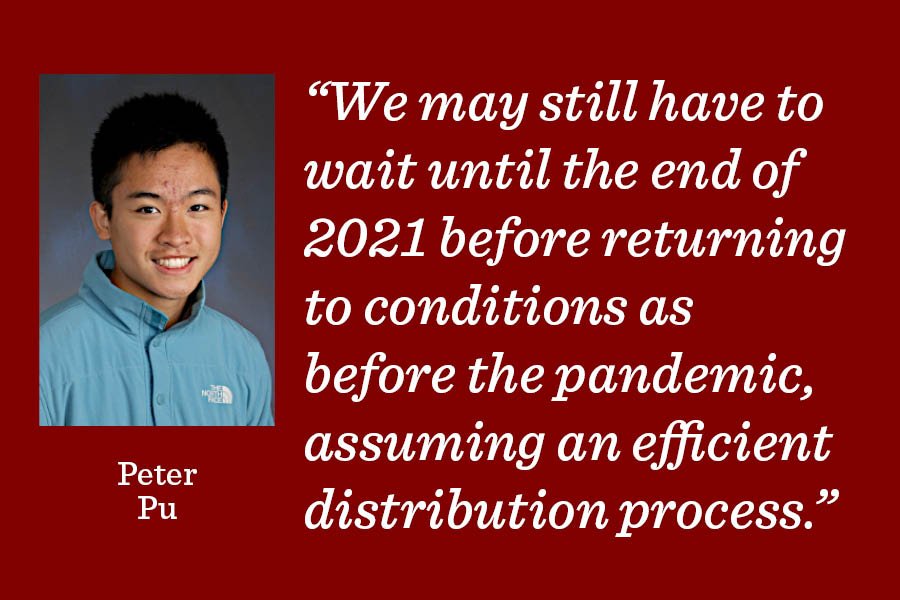Even with vaccine, coronavirus is here to stay
Midway staff
We may still have to wait until the end of 2021 before returning to conditions as before the pandemic, assuming an efficient distribution process, writes news editor Peter Pu.
December 16, 2020
After nine months and over 67 million cases worldwide, the world hopes every day for the coronavirus pandemic to finally come to an end. Pfizer and Moderna’s highly effective vaccines, which both rely on messenger RNA coding for a viral spike protein, provide long-awaited relief.
However, we may be nowhere close to the end. As our knowledge of SARS-CoV-2 is still limited, we must remain disciplined with social distancing, mask-wearing and other practices and consider that the virus may continue to be a part of our lives in future years even with vaccines and better treatment.
While the Pfizer and Moderna vaccines seem promising, it may take until mid-2021 for them to become widely available. We may still have to wait until the end of 2021 before returning to conditions as before the pandemic, assuming an efficient distribution process.
Even with effective vaccines on the horizon, it is unclear whether enough of the population is willing to get vaccinated. A recent Gallup poll found that only 58% of Americans would agree to get vaccinated. The government, along with health care professionals, clearly have a formidable task convincing the population that the current vaccines are safe and worth getting. It is essential that people trust in science and have confidence in researchers to prioritize safety rather than expediency. Unlike past pandemics, the current technology allows us to defeat or at least suppress pathogens, but without widespread vaccination modern tools present no use.
The government along with other leaders have the responsibility to advocate for vaccination to promote widespread immunity. According to an article published by the New England Journal of Medicine, the end of the pandemic requires 5.6 billion people around the world to develop immunity either from contracting the virus or receiving vaccination. It is likely that the process will last beyond 2021 and may require to follow pandemic protocols of wearing masks and social distancing for longer than expected.
Because the duration of both natural and vaccine-induced immunity for the virus are unknown, the virus must be treated as a long-term health threat that we must simply live with until it becomes fully controlled. A study published in Science found that an immunity duration of 40 weeks may lead to outbreaks every year, and a longer duration of 100 weeks still leads to outbreaks every other year. A vaccine exists for influenza, but like the flu, SARS-CoV-2 may re-emerge every winter and demand new treatment methods. An article by the Yale School of Medicine notes that even with an effective vaccine, the risk of contracting SARS-CoV-2 may persist in future years. Only two diseases, smallpox and rinderpest, have been officially recognized as eradicated by the World Health Organization, and it is unlikely that SARS-CoV-2 will add to the list.
While the future may seem gloomy, it is no reason to lose hope.
We may never get used to it, but it is important to continue with practices such as social distancing, wearing masks and diligently washing our hands. These may be the only tangible acts we can do to limit the transmission of the virus. It seems reasonable that these practices will continue until at least the end of 2021, but ultimately, the rigor to which they are followed by us as a whole will determine how long they are necessary.
A news feature published by Nature emphasizes that these practices are essential in limiting infections and may lead to smaller outbreaks when social distancing ends.
This pandemic highlights a growing trend of new viruses. SARS-CoV-2 adds to the four influenza pandemics of the past century, and it is unclear whether the world will be ready for the next. Limiting the transmission of infectious diseases in the future may depend on better technology, early recognition of the risks and widespread cooperation with practices such wearing masks and social distancing.




























































